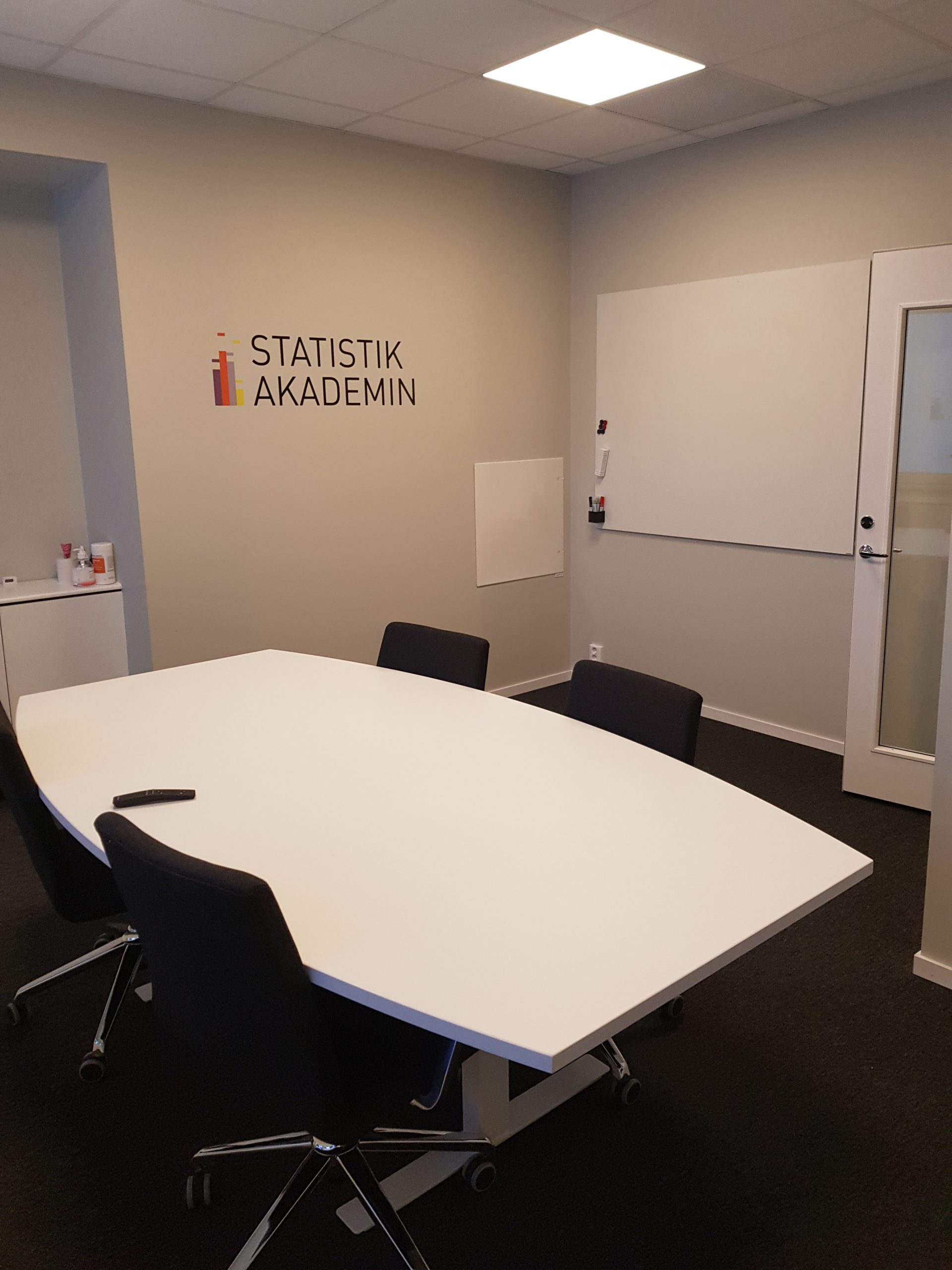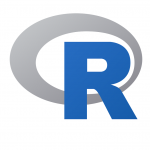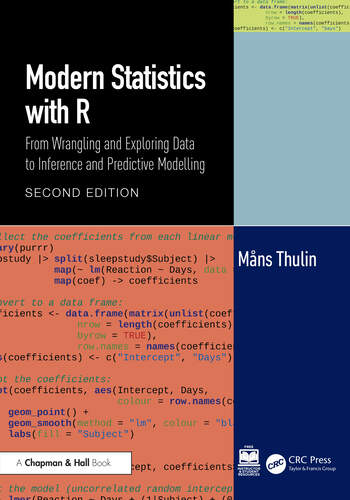Two brand new R courses
Learn how to use survival analysis and biomarkers or machine learning with AI in R.

For you to be able to work freely in R, there are som things you need to know regardless of the intended application of the software. The basic skills required are program management, data management as well as the ability to describe data with tables and graphs.
It is also necessary to have a basic understanding of statistics in order to run accurate analyses in R. Therefore, we recommend all novice users to choose one of our course proposals.
Our proposals will help you get started as quickly as possible with both the software and the statistical models required to work independently in R. You will learn how to choose the right statistical analysis method, and how to interpret and validate the results.

Includes
R 1
R 2
All courses are in English
A total of four days
Price: SEK 22 500
R 1
Introduction to R
Handling data
Data visualisation
Descriptive statistics
Introduction to modern statistics
Statistical concepts
Classical statistical methods
Modern statistical methods
R 2
Linear regression & ANOVA
Linear regression
ANOVA
Advanced regression models
Generalised linear models
Survival analysis
Mixed models

Includes
R 1
R 2
R 3
All courses are in English
A total of six days
Price: SEK 31 800
R 1
Introduction to R
Handling data
Data visualisation
Descriptive statistics
Introduction to modern statistics
Statistical concepts
Classical statistical methods
Modern statistical methods
R 2
Linear regression & ANOVA
Linear regression
ANOVA
Advanced regression models
Generalised linear models
Survival analysis
Mixed models
R 3
Visualisation & data exploration
Visualisation
Dimension reduction with PCA
Cluster analysis & structural equation models
Cluster analysis
Factor analysis
SEM
Mediation analysis

Includes
R 1
R 2
R 3
R 4
R 5
All courses are in English
A total of ten days
Price: SEK 50 000
R 1
Introduction to R
Handling data
Data visualisation
Descriptive statistics
Introduction to modern statistics
Statistical concepts
Classical statistical methods
Modern statistical methods
R 2
Linear regression & ANOVA
Linear regression
ANOVA
Advanced regression models
Generalised linear models
Mixed models
Missing data
R 3
Visualisation & data exploration
Visualisation
Dimension reduction with PCA
Cluster analysis & SEM
Cluster analysis
Factor analysis
SEM
Mediation analysis
R 4
Survival analysis
Kaplan-Meier curves
Comparing groups
Cox and AFT models
Biomarker data
Visualisation of biomarker data
Two-sample tests and regression
Strategies for finding biomarkers
Multivariate analysis of biomarkers
R 5
Machine learning
Evaluation of predictive models
Regularised regression (lasso)
Nearest neighbours models
Decision trees, random forests and boosted trees
Artificial intelligence
Deep neural networks
AI models for analysis of text data
AI models for analysis of images
To express your interest, please fill out the registration of form below.
Upcoming courses

R 2
Online: September 23–24
• Linear regression & ANOVA
• Advanced regression models

R 3
Online: October 8–9
• Visualisation & data exploration
• Cluster analysis & SEM

R 2
Online: November 26–27
• Linear regression & ANOVA
• Advanced regression models

R 3
Online: December 10–11
• Visualisation & data exploration
• Cluster analysis & SEM

R 2
Online: January 27–28
• Linear regression & ANOVA
• Advanced regression models

R 3
Online: February 10–11
• Visualisation & data exploration
• Cluster analysis & SEM
Individual course days – Customize your reservation
There is a possibility to customize your reservation by adding individual course days. These can be added to our course proposals Basic and Medium as well as to our R courses. By adding individual course days to your reservation, you are able to tailor the training package completely according to your needs.

Introduction to R
Introduction to modern statistics
Linear regression & ANOVA
Advanced regression models
Visualisation & data exploration
Cluster analysis & SEM
Survival analysis
Biomarker data
Machine learning
Artificial intelligence
Propensity Score Matching
Introduction to R
Handling data
Data visualisation
Descriptive statistics
Introduction to modern statistics
Statistical concepts
Classical statistical methods
Modern statistical methods
Linear regression & ANOVA
Linear regression
ANOVA
Advanced regression models
Generalised linear models
Survival analysis
Mixed models
Visualisation & data exploration
Visualisation
Dimension reduction with PCA
Cluster analysis & structural equation models
Cluster analysis
Factor analysis
SEM
Mediation analysis
Survival analysis
Kaplan-Meier curves
Comparing groups
Cox and AFT models
Biomarker data
Visualisation of biomarker data
Two-sample tests and regression
Strategies for finding biomarkers
Multivariate analysis of biomarkers
Machine learning
Evaluation of predictive models
Regularised regression (lasso)
Nearest neighbours models
Decision trees, random forests and boosted trees
Artificial intelligence
Deep neural networks
AI models for analysis of text data
AI models for analysis of images
Propensity Score Matching
Introduction
Identify imbalances in your data set
Matching techniques
Evaluation of the matching quality
Estimate the treatment effects
How to describe methods and results
The program R
R is a programming language whose main applications include statistical calculations, data visualization and machine learning assisted by AI. Through user-developed add-on packages, the number of methods for statistical calculations and graphical presentations has greatly expanded. The large number of extension packages containing reusable code and documentation has even augmented the core R language.
Applications
R is one of the most well-known and most commonly used programs for statistical analysis. It is today fully comparable to commercial statistical programs such as SPSS, SAS and Stata. Software development is constantly driven forward by all the user-created packages that are easy to install and have made R incredibly popular in computer science.
Interfaces
Early users preferred to use R purely text-based via the command prompt. Today, users usually prefer the plethora of applications that can be used to visually edit and run R code, such as Rcmdr and RStudio. With these and other extensions such as ggplot2, you can create graphics with as least as good quality as in any other statistics program.
Communities
A major difference for the users compared with other programs is that R is available free of charge as a free software license. This has led to local communities all over the world where users can network, share ideas, and learn new things. For you as a user, it is very positive as you can get help and answers to questions to a much greater extent. Because R is open source, you can also use program code that others have developed in your own projects without having to pay for license fees.
News about R
Learn how to use survival analysis and biomarkers or machine learning with AI in R.
Go from being a beginner to being able to perform your own analyses
Start using R and learn how to handle the statistical methods you need to work independently with your own analyses.